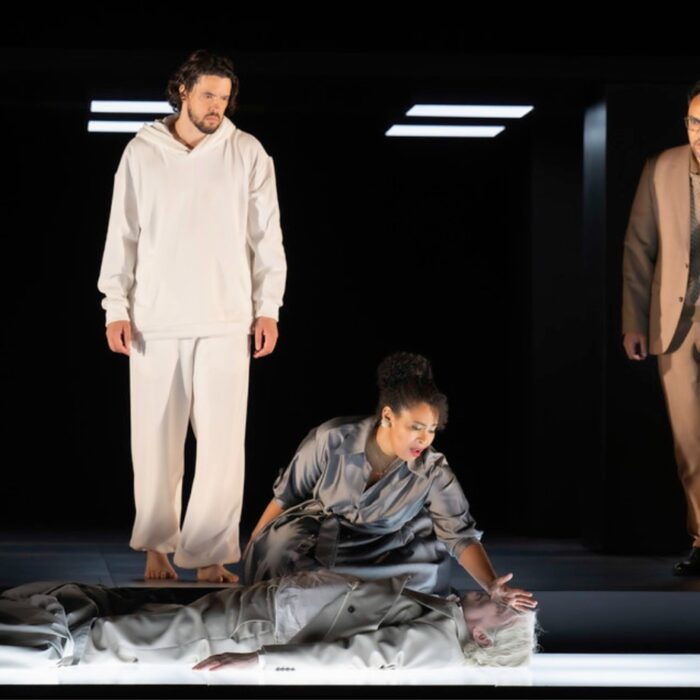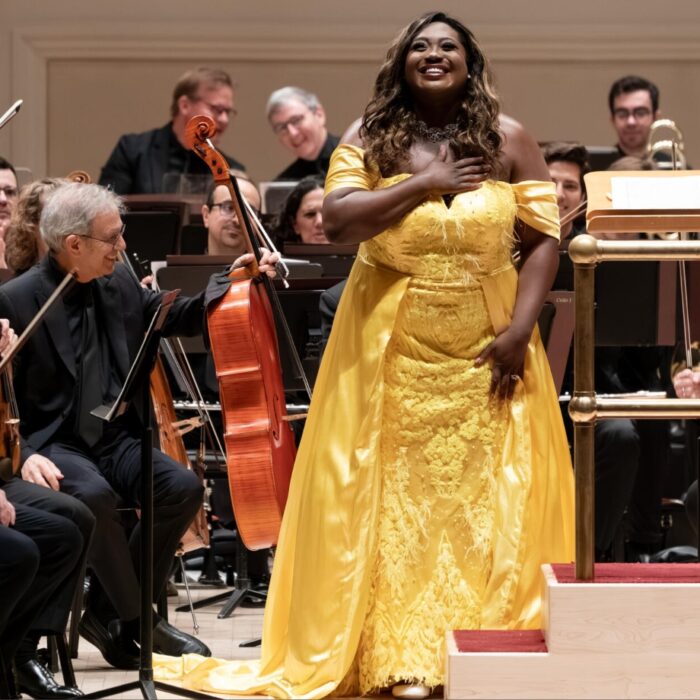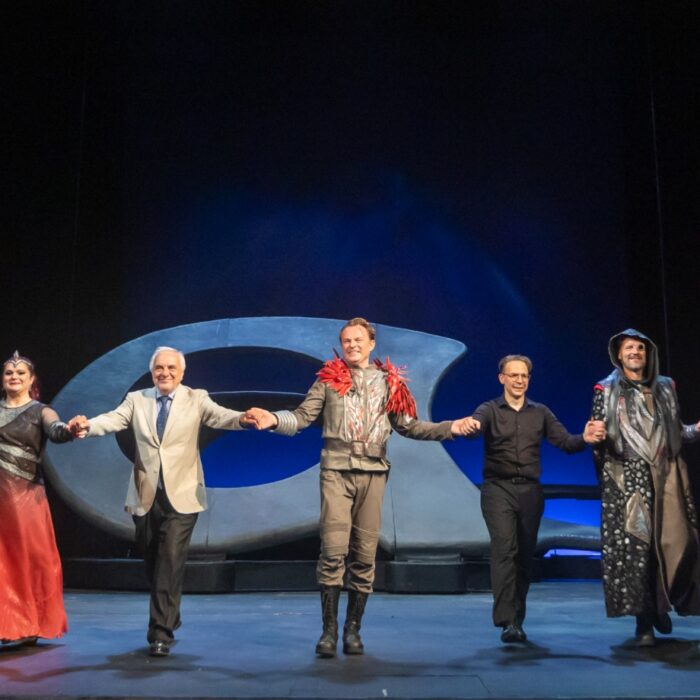
Gewandhausorchester Leipzig 2018-19 Review: The Autumn Tour
Andris Nelsons, Kristine Opolais, & Ensemble Come Together For Display of Friendship
By Polina LyapustinaSince Andris Nelsons became the 21st Gewandhauskapellmeister of the Gewandhausorchester Leipzig in February 2018, he has started to plan a European tour to represent this great collaboration with the orchestra.
This tour features appearances in London, in Frankfurt, Mannheim, and Dortmund in Germany, in Malmo and Stockholm in Sweden, as well as in Nelsons’ homeland, Latvia — in Riga and in Great Amber concert hall in Liepaja. This place is a modern concert venue in Latvia, with amazing acoustics, created by Prof. Karlheinz Müller of Müller-BBM, Germany, one of the world’s leading specialists in the field.
The program selection — contemporary Latvian composer Andris Dzenitis, Tchaikovsky and Mahler — was supposed to show the full range of sound diversity. The plan was truly ambition.
The result was that and more.
Mother Earth
Andris Dzenitis received the commission to compose “Māra für Orchester” from the Gewandhausorchester and the Boston Symphony Orchestra. The world premiere was given by the Gewandhausorchester in Leipzig in 2014. This piece was chosen to open every performance of the European tour. It was tremendously exciting for Latvian audiences, who were undoubtedly connected with their local culture and folklore.
Māra is the highest-ranking goddess in Latvian mythology — Mother Earth. She also takes spirits after death. Probably that is why the leading sounds were always percussion. We could clearly hear the power of nature, in a very dynamic, aggressive way.
The strings filled the background with anxiety and they actually had their own ensemble in this piece. Sebastian Breuninger, the first violinist, conducted the background flow, giving Nelsons space to conduct the main score. With every movement of his bow and body, Breuninger led the strings through the tangled plot.
Meanwhile the conductor could tell us a dramatic story with the help of brass and percussion. A pensive and sensitive saxophone solo toward the end of the piece became the best description of the narrative arc, giving a sense of hope.
For the orchestra, which is so used to playing such transparent music as that of Mendelssohn, performing a heavier work like this one could be quite a challenge. However, the Gewandhaus Leipzig coped with it perfectly.
Puccini Diva in Russian drama
Tchaikovsky’s music was a really good supplement to the program. It’s different, it’s dramatic, but in a special Russian way, the author has a strong connection with both the orchestra and the conductor.
Pyotr Tchaikovsky conducted the orchestra in 1888 and considered his conducting debut with the Gewandhausorchester to have been the catalyst for the lasting recognition of his music in Germany. And it still seems like his music and the orchestra remain true to each other. I would say the Polonaise from “Eugene Onegin” seemed to suit the orchestra’s good mood the best.
Another reason to have Tchaikovsky in the program was for the opera.
Kristine Opolais appeared on stage dressed in black. Briefly greeting the audience she instantly changed the mood to dramatic. Her dramatic acting skills earned worldwide fame, and deservedly so for once she started to sing Lisa’s Aria “Otkuda eti slyozi” from “The Queen of Spades,” we felt it immediately. With her magical voice and dramatic talent, along with her black dress, she was proudly wearing her wild passion, always, even when her role didn’t require it. It didn’t necessarily fit the character of Lisa, as there was neither desolation, despondency, nor weakness. But there was a fierce and powerful struggle which is more akin to the Puccini heroines she excels at.
Tatiana’s letter scene from “Eugene Onegin” was even better. The wide range from passion and hope to fear of rejection were conveyed perfectly with her vocal flexibility. Opolais’ voice brimmed with energy, and the soprano seemed at ease in the hall, which at times seemed too small for her powerful voice.
Her Top C at the end of Letter scene was clean and powerful, as were her low notes and gentle pianissimos. But every time I looked at her, I could not escape the thought that she wasn’t Lisa or Tatiana. This interpretation lacked weakness and submission to fate. The struggle couldn’t remain inside and rushed out aggressively.
But even without alignment to characters, Kristine Opolais demonstrated her class that evening.
The Nature of Mahler
Mahler and Gewandhaus orchestra have an extensive relationship.
Gustav Mahler spent two years at the Leipzig Opera in the position of Second Kapellmeister, conducting the Orchestra between August 1886 and June 1888 in almost 300 performances. And his First Symphony was composed during that time. Gewandhausorchester released all nine Mahler’s symphonies recorded under the baton of their previous leader Riccardo Chailly on Blu-ray in 2018.
So the orchestra had to be completely prepared to perform this piece. Once the ensemble got back on stage after an interval during the performance, the audience greeted them with applause, filled with high expectations.
Throughout the symphony, there was an amazing balance between the extremes of sound and dynamics. Grotesque and sincere sadness were also combined in a brilliant and again very natural way. One emotion changed into another unnoticed, as we couldn’t recognize when the cleanest flute sound was replaced by the same clean sound of a violin.
When it came to the Third movement — a funeral march — the orchestra treated us with great pianissimos, which Nelsons considers hardly comprehensible for many orchestras, but not for Gewandhausorchester.
Coming to the end, the orchestra picked up the energy with the trumpets and horns, but then brought us back to the lyrical section with quotes from the first and second movements in the strings. After that, the brass finally reached a climax. At that moment, the hall of Great Amber seemed too small for the deep and bright fanfare ending, filled with diverse, rich and potent percussion.
A friendship
The program was perfectly executed. But what was far more impressive was the sense of comradery that emanated from the large orchestra.
Maestro Nelsons conducted with a smile. Two percussionists smiled as they tried to synchronize during their difficult ending of the first Symphony. We saw the same interaction between the lead cellists and violinists.
It ultimately felt like the orchestra got a new member, which it did, but this addition was special. It feels like someone who listens to what happens and gives the orchestra members a chance to listen to others and play in this surrounding more freely, than under someone’s baton.


